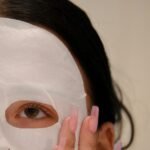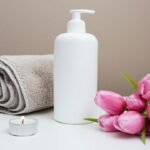Achieving a flawless foundation application is the cornerstone of any makeup routine. The first step in this process is selecting the right foundation for your skin type. Foundations come in various formulations, including liquid, cream, powder, and stick, each catering to different skin types and desired finishes.
For instance, those with oily skin may benefit from a matte finish foundation that controls shine, while individuals with dry skin might prefer a hydrating formula that imparts a dewy glow. It’s essential to test the foundation on your jawline or wrist to ensure it matches your skin tone and undertone, as lighting can significantly alter how a shade appears. Once you’ve selected the appropriate foundation, the application technique plays a crucial role in achieving that flawless finish.
Using tools such as brushes, sponges, or even your fingers can yield different results. A damp beauty sponge can provide a seamless, airbrushed effect, while a foundation brush may offer more coverage. Start by applying a small amount of foundation to the center of your face and blend outward, ensuring even coverage without overloading the skin.
Pay special attention to areas that require more coverage, such as redness around the nose or blemishes, and build up product gradually to avoid a cakey appearance.
Contouring and Highlighting for a Sculpted Look
Contouring and highlighting are techniques that can dramatically enhance the structure of your face, creating the illusion of higher cheekbones, a slimmer nose, and a more defined jawline. The key to successful contouring lies in understanding your face shape and knowing where to apply the product. For instance, if you have a round face, contouring along the sides of your forehead and under your cheekbones can create the illusion of length.
Conversely, those with an oval face may focus on contouring the jawline and temples to add dimension. Highlighting complements contouring by drawing attention to the high points of your face where light naturally hits. Applying highlighter to the tops of your cheekbones, the bridge of your nose, and the cupid’s bow can create a radiant glow.
Cream products tend to blend seamlessly into the skin for a more natural look, while powder highlighters can provide an intense shimmer. The balance between contour and highlight is crucial; too much of either can lead to an unnatural appearance. Therefore, blending is essential—using a clean brush or sponge to diffuse harsh lines ensures that your makeup looks polished and professional.
Perfecting the Art of Eyeliner Application
Eyeliner can transform your eyes and elevate your entire makeup look when applied correctly. The type of eyeliner you choose—gel, liquid, pencil, or felt-tip—can influence the final effect. Gel liners offer precision and longevity, while liquid liners provide bold lines that can be built up for drama.
Pencil liners are versatile and easy to use for beginners. To achieve a clean line, start by stabilizing your hand against your cheek or using a mirror at eye level to minimize shakiness. When applying eyeliner, consider the shape of your eyes.
For almond-shaped eyes, a classic winged liner can enhance their natural beauty. If you have hooded eyes, applying liner just above the crease can prevent it from smudging when your eyes are open. For those with round eyes, tightlining—the technique of applying liner to the waterline—can create depth without making the eyes appear smaller.
Practice is key; using short strokes rather than one continuous line can help maintain control and precision.
Achieving the Perfect Eyebrow Shape and Fill
Eyebrows frame the face and play a significant role in defining one’s overall look. The perfect eyebrow shape varies from person to person but generally follows the natural arch of your brow bone. To determine where your brows should start and end, use a pencil or brush: align it vertically with the side of your nose for the starting point and diagonally from the outer corner of your nose to the outer corner of your eye for the endpoint.
Once you’ve established these points, you can begin shaping your brows with tweezers or wax. Filling in eyebrows requires careful consideration of color and technique. Choose a shade that closely matches your natural brow color or is one shade lighter for a softer look.
Using an eyebrow pencil or powder, fill in sparse areas with light strokes that mimic hair growth rather than drawing solid lines. A spoolie brush can help blend product for a more natural finish. Setting your brows with a clear or tinted gel will keep them in place throughout the day while adding definition.
Mastering the Art of Blending Eyeshadow
Blending eyeshadow is an essential skill that can elevate any eye makeup look from basic to breathtaking. The key to effective blending lies in using quality brushes and understanding color theory. Start with a transition shade that is slightly darker than your skin tone; this will create depth in the crease area.
Using a fluffy blending brush, apply this shade in windshield wiper motions to ensure an even application. When layering colors, always blend from light to dark shades. After applying your transition shade, introduce darker colors gradually while continuing to blend outwards and upwards toward the brow bone.
This technique prevents harsh lines and creates a seamless gradient effect. Additionally, using a clean brush for blending between colors can help maintain clarity without muddying the shades together. Remember that practice makes perfect; experimenting with different color combinations will enhance your blending skills over time.
The Power of a Bold Lip: Application and Longevity
Prepping Your Lips
Start by exfoliating your lips with a gentle scrub to remove dead skin cells and smooth out the surface. Follow up with a hydrating balm to create a smooth canvas for your lipstick. This step is crucial in ensuring an even application and preventing dry, chapped lips.
Applying Lipstick with Precision
Once your lips are prepped, outline them with a lip liner that matches your lipstick shade. This step not only defines the shape of your lips but also prevents feathering throughout the day. When applying lipstick, consider using a lip brush for precision, especially with vibrant colors like reds or deep plums. Start at the center of your lips and work outward for even coverage.
Enhancing Wear Time
For added longevity, blot your lips with a tissue after the first layer and apply a second layer on top. To further enhance wear time, consider using a setting powder lightly dusted over your lips or applying translucent powder around the edges to lock in color without compromising vibrancy.
Understanding the Importance of Setting and Baking
Setting makeup is crucial for ensuring longevity throughout the day, especially in humid conditions or during long events. Setting powders come in various formulations—loose or pressed—and can help absorb excess oil while providing a matte finish. After completing your makeup application, lightly dust setting powder over areas prone to shine such as the T-zone (forehead, nose, chin) using a fluffy brush for an even application.
Baking is an advanced technique that involves applying a generous amount of translucent powder to specific areas—typically under the eyes and along the jawline—and allowing it to sit for several minutes before dusting off excess product. This method not only sets concealer but also brightens these areas by reflecting light effectively. The result is a flawless finish that lasts longer than traditional setting methods alone.
The Art of Applying False Lashes Like a Pro
False lashes can dramatically enhance any eye look by adding volume and length; however, applying them can be daunting for many. The first step is selecting lashes that complement your eye shape—individual lashes may offer more versatility while strip lashes provide instant drama. Before application, trim lashes from the outer edge if they are too long for your eyes.
To apply false lashes like a pro, start by curling your natural lashes and applying mascara for better adhesion. Use a high-quality lash glue and allow it to become tacky before placing it on your lash line; this typically takes about 30 seconds. Using tweezers or an applicator tool can help position lashes accurately along your natural lash line without pinching or discomfort.
Once applied, gently press down on the lashes to secure them in place and finish with another coat of mascara to blend them seamlessly with your natural lashes.
Creating a Natural, Dewy Glow with Highlighter
Highlighter has become an essential component in modern makeup routines due to its ability to impart radiance and dimension to the skin. To achieve a natural dewy glow, opt for cream or liquid highlighters that blend effortlessly into foundation rather than sitting on top of it. Apply highlighter on areas where light naturally hits: tops of cheekbones, brow bones, bridge of the nose, and cupid’s bow.
For those who prefer powder highlighters, choose finely milled formulas that provide luminosity without chunky glitter particles. Using a fan brush or small tapered brush allows for precise application; start with a light hand and build up intensity as desired. The key is to blend well so that it melds into the skin rather than appearing as an obvious stripe of shimmer.
The Secret to Long-lasting Makeup: Setting Spray and Powder
Setting sprays have gained popularity as an essential final step in makeup application due to their ability to lock in makeup for extended wear while providing hydration or mattifying effects depending on formulation. After completing your makeup routine, hold the setting spray about six inches away from your face and mist evenly across all areas; this helps meld layers together for a cohesive finish. In addition to setting sprays, setting powders play an equally important role in prolonging makeup wear time by absorbing excess oil throughout the day.
A combination of both products can yield optimal results; use powder on areas prone to shine while finishing with spray for added longevity and hydration.
Mastering the Art of Makeup Removal and Skincare Aftercare
Proper makeup removal is just as crucial as application; neglecting this step can lead to clogged pores and breakouts over time. Begin by using an oil-based cleanser or micellar water to dissolve makeup effectively without harsh scrubbing; this method is particularly beneficial for waterproof products that require extra attention. After removing makeup thoroughly, follow up with a gentle cleanser suited for your skin type to ensure all residue is eliminated.
Incorporating skincare products such as toners, serums, and moisturizers post-cleansing will help restore hydration levels while promoting healthy skin regeneration overnight. Establishing this routine not only enhances skin health but also prepares it for future makeup applications by creating an optimal canvas free from impurities.
FAQs
What are the top makeup techniques every woman should master?
Some of the top makeup techniques every woman should master include contouring and highlighting, perfecting the winged eyeliner, achieving a flawless base with foundation and concealer, mastering the art of blending eyeshadow, and creating the perfect bold lip.
Why is it important for women to master these makeup techniques?
Mastering these makeup techniques can help women enhance their natural features, boost their confidence, and create a polished and put-together look for any occasion.
How can women learn and practice these makeup techniques?
Women can learn and practice these makeup techniques by watching tutorials online, attending makeup workshops or classes, and practicing regularly with different makeup products and tools.
Are these makeup techniques suitable for all skin types and tones?
Yes, these makeup techniques can be adapted and customized to suit different skin types and tones. It’s important to choose the right products and shades that complement individual skin tones and textures.
What are some common mistakes to avoid when mastering these makeup techniques?
Some common mistakes to avoid when mastering these makeup techniques include using the wrong shade of foundation, over-applying products, not blending properly, and not taking into account individual face shapes and features.









